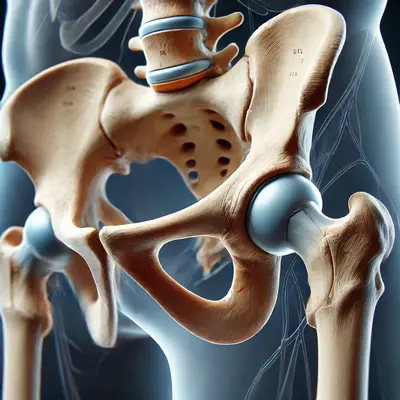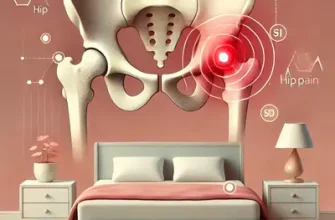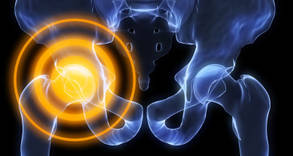Hip pain is a growing concern that affects people of all ages. For many, the thought of surgery is daunting, leading them to explore non-surgical options first. This article delves into the most effective non-surgical treatments for hip pain, their real-world applications, and whether they can offer lasting relief.
What Causes Hip Pain?
Before diving into treatments, it’s important to understand the common causes of hip pain. Conditions like arthritis, bursitis, tendinitis, and muscle strain are among the most frequent reasons. For older adults, hip osteoarthritis—a breakdown of the cartilage in the hip joint—can result in chronic pain and stiffness. In younger individuals, injuries from sports or overuse are often the culprit.
Case Study: Karen’s Struggle with Arthritis
Karen, a 52-year-old office worker, noticed gradual stiffness in her hip. Over time, pain became part of her daily life, especially in the mornings. After a consultation, she was diagnosed with hip osteoarthritis. Despite recommendations for surgery, Karen wanted to try non-surgical approaches first. Her journey through alternative treatments is not uncommon and showcases how others might seek to manage their hip pain.
Non-Surgical Treatment Options for Hip Pain
1. Physical Therapy for Hip Pain Relief
Physical therapy is one of the most widely recommended non-surgical treatments. By improving flexibility and strengthening the muscles around the hip joint, physical therapy can significantly reduce pain and improve function.
“Patients who commit to physical therapy often see notable improvements in mobility and pain management without the need for surgery.” – Dr. Emily Stevenson, Orthopedic Specialist
2. Corticosteroid Injections
For those experiencing severe inflammation, corticosteroid injections are a common non-surgical intervention. These injections help reduce inflammation and provide temporary pain relief, lasting from a few weeks to several months.
Case Study: Michael’s Experience with Injections
Michael, a 41-year-old mechanic, suffered from hip bursitis after years of physical labor. His doctor recommended corticosteroid injections as a non-invasive solution. After just two treatments, his inflammation subsided, and he was able to return to work pain-free for several months.
3. Weight Management and Lifestyle Changes
For patients who are overweight, weight management can drastically reduce stress on the hip joint. Lifestyle changes, such as low-impact exercises (like walking or swimming) and a balanced diet, are crucial for long-term pain management.
4. Platelet-Rich Plasma (PRP) Therapy
PRP therapy is gaining popularity in treating joint pain, including the hip. By using the patient’s blood platelets, PRP promotes healing in damaged tissues. It’s an exciting option for patients seeking alternatives to steroid injections or surgery.
“PRP therapy shows promise, especially for younger patients who aren’t ready for surgery. While more research is needed, early results are encouraging.” – Dr. Sarah Phillips, Sports Medicine Specialist
How Effective Are Non-Surgical Treatments for Hip Pain?
The effectiveness of non-surgical treatments largely depends on the underlying cause of the pain. For conditions like mild arthritis, bursitis, or muscle strain, treatments like physical therapy and injections can offer significant relief. However, for patients with advanced osteoarthritis or structural issues, surgery might eventually become necessary.
Case Study: Abdul’s Decision to Postpone Surgery
Abdul, 60, experienced severe hip pain from advanced hip osteoarthritis. While surgery was recommended, he wanted to exhaust non-surgical options first. Through physical therapy, weight loss, and PRP treatments, Abdul managed his pain for two years before finally opting for hip replacement surgery. His case illustrates how non-surgical treatments can delay the need for invasive procedures.
Key Non-Surgical Treatment Outcomes
| Treatment | Effectiveness for Pain Relief | Duration of Relief | Best For |
|---|---|---|---|
| Physical Therapy | High | Long-term with effort | Arthritis, bursitis, muscle strain |
| Corticosteroid Injections | Moderate to High | 2-6 months | Severe inflammation, bursitis |
| Weight Management | Moderate | Long-term | Overweight patients with arthritis |
| Platelet-Rich Plasma (PRP) | Promising | Varies | Younger patients, early joint damage |
When to Consider Surgery?
While non-surgical options can be highly effective, there are times when surgery becomes unavoidable. If pain persists despite these treatments, or if daily activities are significantly impacted, a surgical consultation may be necessary.
“Non-surgical treatments are a great first line of defense, but it’s important not to delay surgery when it’s truly needed to restore quality of life.” – Dr. Andrew Martin, Joint Replacement Surgeon
Can Non-Surgical Treatments Offer Lasting Relief?
Non-surgical treatments for hip pain can be incredibly effective, especially when implemented early. Physical therapy, lifestyle changes, and injections can provide relief and improve function for many patients. However, for those with advanced conditions, these treatments may only serve as temporary solutions before surgery is required. Every patient’s journey is different, and the best approach is to work with a healthcare provider to tailor a treatment plan to individual needs.









